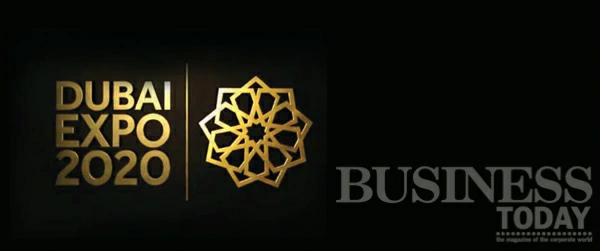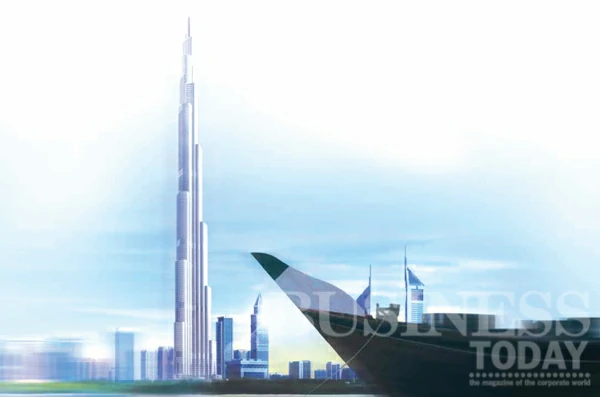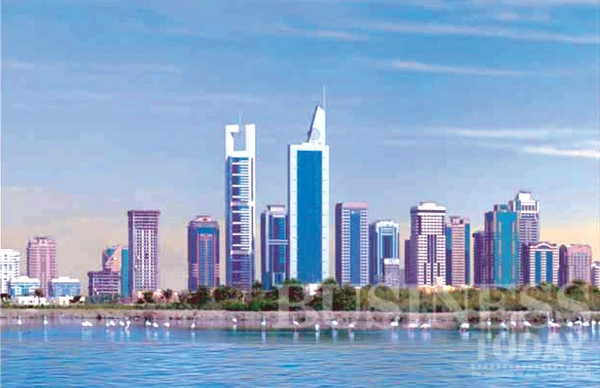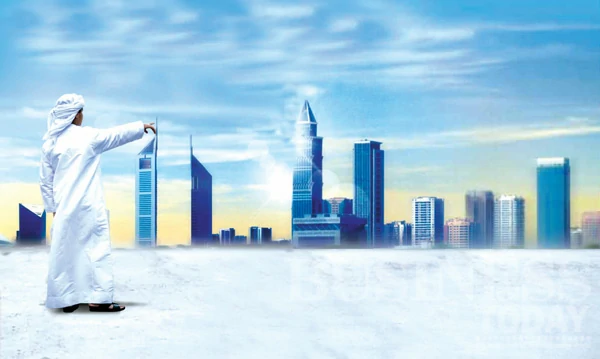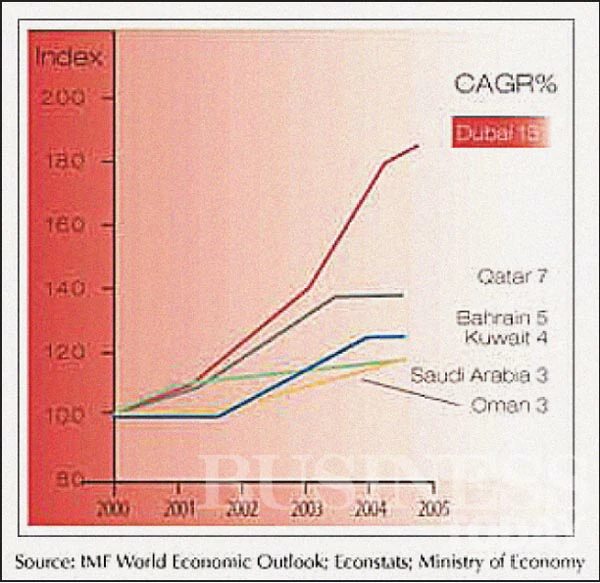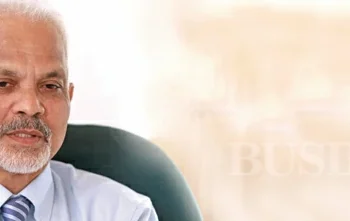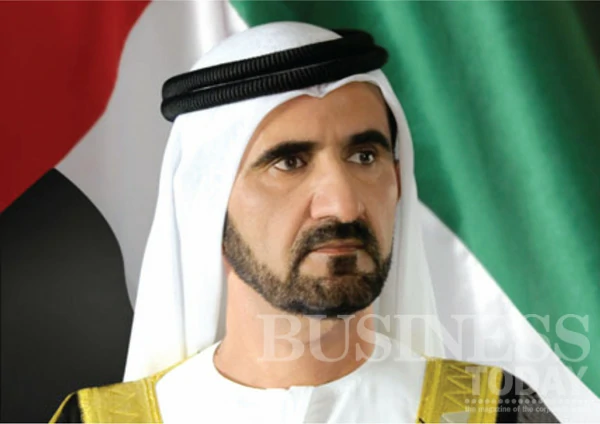
By 2020, Dubai will welcome 20 million visitors per year, and the annual contribution made by tourism to the city’s economy will triple.
His Highness affirmed that the UAE has succeeded in placing itself amongst popular tourist destinations on the global map of tourism, walking confidently into the future through launching ambitious developmental initiatives and high quality projects. He also noted that building a robust infrastructure with high capacity and providing quality high-end services to all the visitors of the UAE is an ongoing process that also necessitate keeping up the pace of development to meet the requirements of the global markets, bearing in mind changes that may occur in such requirements so as to preserve the country’s gains and earn more achievements in the tourism sector that is full of opportunities.
Sheikh Mohammed also highlighted the economic importance of the tourism sector, the hopes the county is pinning on it and the potentials mobilised so as to put the UAE at the forefront of regional and global tourism; essential elements to tourism that have earned Dubai a reputation as a global tourism destination. In fact, the increased number of visitors is strong evidence to this, as Dubai was able to double the number of tourists from only five million yearly to ten million tourists a year during the past eight years. His Highness also said that he firmly believes in Dubai’s ability to reach even a substantial tourist influx in light of the fact that Dubai will shortly witness the implementation of wide new range of projects that will represent new elements of attraction and will open the door to welcoming larger numbers of visitors into the country.
Sheikh Mohammed went on to say: “We are aware that such goals are ambitious, but more important than ambition is realising these goals in reality. We are confident that the Department of Tourism and Commerce Marketing is capable of achieving what it aims for given the previous accomplishments and the positive results attained.” However, Sheikh Mohammed said, “We need to bear in mind that tourism is a broad service sector that one entity cannot solely be held responsible for its development; therefore, it is important that other government departments and institutions share this responsibility and join in developing this sector in order to strengthen our macroeconomic capabilities. Moreover, we expect the private sector to play a similar role in supporting this goal within the framework of the partnership that we have established decades ago. This partnership between the government and private sectors is a source of our pride and we will do all what it takes to make it a success.”
We Expect The Private Sector To Play A Similar Role In Supporting This Goal Within The Framework Of The Partnership That We Have Established Decades Ago. This Partnership Between The Government And Private Sectors Is A Source Of Our Pride And We Will Do All What It Takes To Make It A Success.
Developed by the Department of Tourism and Commerce Marketing (DTCM) under the guidance of His Highness Sheikh Mohammed bin Rashid Al Maktoum, the Vision sets out how the city will both double its annual visitor numbers from 10 million in 2012 to 20 million in 2020, and increase the economic contribution of the tourism sector. Early estimates from a study currently being conducted indicate that the current economic contribution is in the range of AED 100 billion.
His Excellency Helal Saeed Almarri, Director General of DTCM, said: “The strategy behind the Dubai Tourism Vision for 2020 will further leverage a sector which has been a central pillar in the city’s economic growth, success and diversification. It is based upon two central tenets: the first being to widen our range of tourism offerings across events, attractions, infrastructure, services and packages and to enhance the overall visitor experience from arrival to departure.
The second tenet is to adapt our marketing approach in order to showcase Dubai to a wider audience and grow the conversion rate of awareness to bookings. There are a range of initiatives we will put in place in both of these areas, which will work together to attract more visitors to the city and encourage them to stay longer and spend more money during their time with us.
Our role at DTCM is to act as a facilitator of growth, harnessing the collective power of stakeholders in the city and deepening engagement with parties outside of Dubai, so that we deliver the vision.”
The target of 20 million visitors will be achieved through meeting a number of objectives. First, maintaining existing market share of the outbound tourism of all source markets: economic and demographic factors will increase the amount of outbound tourists in each market, therefore maintaining Dubai’s existing percentage market share will deliver an up-lift in visitor numbers. Second, increasing awareness and consideration to visit in a number of source markets, which DTCM has identified as having significant potential for growth, such as Latin America, China and the emerging economies of Africa. Third, increasing the number of repeat visits, already a significant driver for tourism in the city.
Meeting these objectives in addition to driving up the average length of stay (currently at 3.76 days) and increasing the amount of money spent by tourists during their visits will lead to the trebling of the economic contribution that tourism makes to the emirate’s Gross Domestic Product (GDP).
His Excellency Helal Saeed Almarri said: “The Vision of His Highness has created a destination with experiences that no other city can offer. We have a number of attractions that are famous throughout the world including the world’s tallest building Burj Khalifa, the Burj Al Arab, and The Palm Jumeirah; the world’s largest shopping malls; and an incredible infrastructure, which acts as a magnet for global travellers. The city has a portfolio of world-class hotels, the second busiest airport on the planet and a world leading – and in my opinion, the best – airline and these are also very well known.
“As A City We Have Done A Very Good Job In Building Awareness Of Dubai. Part Of Our New Strategy Is To Adapt Our Marketing Approach To Showcase Dubai To An Even Wider Audience…”
But in addition we have a substantial, wide-ranging and ever evolving destination offer that compliments the more renowned attractions and we will ensure that every potential visitor knows the depth and range of experiences they can enjoy on holiday in Dubai.
“As a city we have done a very good job in building awareness of Dubai. Part of our new strategy is to adapt our marketing approach to showcase Dubai to an even wider audience but also to grow the conversion rate of awareness to bookings, making sure that a potential visitor doesn’t just know about Dubai – he views it as his next holiday or business destination.”
To widen the range of tourism offerings, there are three key areas of focus:
– In line with His Highness Sheikh Mohammed’s statement earlier this year that the UAE should be the world’s leading family destination, DTCM will play a central role in coordinating the activities of industry and public sector partners to expand the existing attractions, events and experiences that cater to families. This will also include creating segmented packages and tailored offerings that make the most of the Emirate’s assets, including the city, desert and coastline – for example, by effectively marketing the historic and cultural sites; world-class sporting facilities; and capabilities in the cruise industry.
– Dubai as an event destination is a second area of principal focus, with the aim of moving from the regional events hub to a global events and entertainment destination. As part of this, both the Dubai Events and Promotions Establishment (DEPE) – organiser of festivals such as Dubai Summer Surprises and Dubai Shopping Festival – and Dubai Calendar, were recently integrated into DTCM. DTCM will also continue to work closely with the Expo2020 team to support and promote the Dubai, UAE bid to bring the World Expo to the MENASA (Middle East, North Africa and South Asia) region for the first time.
HE Helal Saeed Almarri commented: “DEPE has been incredibly successful in creating and developing seasonal festivals that have driven the growth of the events and retail sectors. We will now leverage that expertise to create new festivals. Likewise, since it launched two years ago Dubai Calendar has proven a big success, growing from being an online portal at launch to becoming a catalyst for improving the city’s events offer 52 weeks of the year. By bringing these two entities into DTCM alongside Dubai Convention Bureau we can lead a coordinated approach to a year-round programme of events for residents, tourists and business visitors. Becoming the host city for the World Expo 2020 will of course further enhance Dubai’s status as an events capital, which is why we are putting the full weight of DTCM’s support behind the bid team.”
– The offer to business visitors is a third principal focus, with the strategy setting out plans for enhancing Dubai’s status as a business destination. Already the Meetings, Incentives, Conferences and Exhibitions (MICE) capital of the region, DTCM will work with the industry in improving the business tourism offer to make sure that Dubai is the easiest and most effective place to do business; and to adopt a more unified approach to business and leisure tourism.
“We See No Distinction Between The Business Traveller And The Leisure Visitor. Today’s Conference Delegate Is Tomorrow’s Holidaymaker And There Are A Number Of Steps We Can Take To Encourage…”
His Excellency Almarri said: “We see no distinction between the business traveller and the leisure visitor. Today’s conference delegate is tomorrow’s holidaymaker and there are a number of steps we can take to encourage the business traveller to extend their stay or return for leisure trips with friends and family.”
Following the announcement of the Dubai Tourism Vision for 2020, DTCM and its partners in Government will share details of its plans with industry stakeholders from both within Dubai and its key source markets.
Dubai Strategic Plan
Background
Since the establishment of the United Arab Emirates in 1971, Dubai has developed a distinct identity as a modern and dynamic emirate. Dubai now enjoys a global reputation as an economic hub and an excellent location for investment. As the global environment becomes more competitive and challenges grow, Dubai needs to ensure that it continues to build on its success through proper planning and strategy development.
The Executive Council, directed by the overall vision of Dubai’s leadership, has commissioned the development of the Dubai Strategic Plan (DSP) along five sectors:
1. Economic Development
2. Social Development
3. Infrastructure, Land and Environment
4. Security, Justice and Safety
5. Government Excellence
The aim of the Dubai Strategic Plan is to establish a universal understanding of Dubai’s vision among the various government entities and to ensure a common framework for the operations of these entities. The plan serves as a framework under which all government-related initiatives converge to consistently meet the vision and aims set by Dubai’s Government.
The development of the Dubai’s Strategic Plan was largely based on a ‘consultative approach’ involving a considerable number of stakeholders from the various sectors covered in the plan. The guiding principle was prioritisation; focusing in every phase of the plan on the areas with the highest priority and development potential.
The purpose of this document is to present the general frameworks developed as part of the Dubai Strategic Plan. The aims and strategic thrusts defined in these frameworks will form the basis for further detailing of strategic programmes and plans by Government departments and stakeholders with ultimate purpose of achieving Dubai’s vision.
Future Dubai
Mission
Over the past few decades, Dubai has successfully developed its status as a major city, enhancing the wellbeing of its people and creating an environment that attracts businesses and individuals.
To support, maintain and develop this status, the Government of Dubai will focus on delivering its mission of
Achieving comprehensive development and building human resources
Promoting economic development and government modernisation
Sustaining growth and prosperity
Protecting Nationals’ interests, public interest and wellbeing
Providing an environment conducive for growth and prosperity in all sectors
Guiding Principles
The Dubai Government adopted a set of clear guiding principles for the various sectors that comprise the Dubai Strategic Plan (DSP):
1. Economic Development:
Adoption of Free Market Economy Principles
Innovation in Launching Initiatives
Speed and Accuracy in Project Execution
Unique Relationship and Partnership with the Private Sector
2. Social Development:
Protection of the National Identity, Culture and Way of Life
Development of National Human Resources
Promoting Social Justice and Equality
Openness to the World while Maintaining Uniqueness
3. Security Justice and Safety:
Ensuring Justice and Equality for All
Maintaining Security and Stability
Protecting Human Rights
4. Infrastructure, Land and Environment:
Provisioning of World-Class Infrastructure Designed to Suit the
Requirements of all Users
Preserving the Environment in line with International Standards
5. Public Sector Excellence:
Transparency
Sound Financial Performance and Effectiveness
Accountability and a Result-Based Culture
Excellence in Customer Service
Development of Human Resources
Working Effectively within the Federal Framework
Economic Development
1. Introduction
Dubai’s economic growth from 2000-2005 has been remarkable, with double-digit real GDP growth and a relatively high per capita income despite negligible dependence on oil. (The driving force behind Dubai’s economic performance has been the Government, through investments and other initiatives, supported by the private sector) Economic performance at the sectoral level has also been impressive, and was led by trade, construction and real estate sectors, with good signs of successful diversification.
(1) GDP Growth (2000-2005)
Dubai’s historical economic growth has been truly impressive. In particular since the year 2000, real GDP has been growing at a compounded annual growth rate of 13 percent by far exceeding that of its GCC counterparts.
FIGURE 1: REAL GDP GROWTH – DUBAI VS GCC COUNTRIES (2000-2005)
The Dubai economy has also been growing faster than the emerging economies of China and India, and the developed economies of Ireland, Singapore, and the US.
FIGURE 2: REAL GDP GROWTH – DUBAI VS INTERNATIONAL BENCHMARKS (2000-2005)
Much of Dubai’s current success has been a result of its bold and visionary leadership and innovative human resources, mainly driven by Government policies aimed at improving the business and investment environment, in addition to initiatives to establish specialised zones and mega projects (e.g. Internet and Media City, Healthcare City, The Palm, Dubailand, etc). Those developments ensured a leading role for Dubai, and helped attract excess regional liquidity in the form of Foreign Direct Investment (FDI).
Economic growth has also been fuelled by private sector participation in developing sectors for which the Government has set the stage by establishing a conducive business environment, coupled in many instances with heavy initial investments to boost private sector confidence.
Other supporting factors are supply-side factors such as availability of labour and land for major real estate projects; the existence of efficient government services; a solid institutional framework and good mechanisms for service delivery; strong laws and regulations; excellent infrastructure, a strategic location coinciding with the rapid rise in global trade, especially in China and India and openness to other cultures, giving Dubai a reputation as a safe and comfortable place to live and do business.
(2) Per Capita GDP Growth
The factors discussed above have put Dubai’s real per capita GDP at Dhs 114,362 ($31,140) in 2005, with an annual average growth rate exceeding six percent over the 2000-2005 period. Dubai’s per capita income today compares very favourably with that of many developed countries such as Singapore [Dhs 98,555 ($26,836)](1) and Hong Kong [Dhs 93,623 ($25,493)](1), countries which required a much longer period of time to reach their current levels.
TABLE 1. MAJOR GROWTH INDICATORS IN DUBAI (2000-2005)
(1) Data are for 2005, calculated in current 2005 USD, and extracted from IMF World Economic Outlook
(3) Sectoral Performance
Economic performance at the sectoral level has also been impressive. The non-oil sector played a more prominent role in 2005 with a 95 percent contribution to GDP, as compared to 90 percent in 2000 (and as much as 46 percent in 1975). This was mainly the result of the reduced dependence on oil as well as a deliberate policy of diversifying the economy in favour of the non-oil sectors in which both the overall business environment and sector-specific programmes have played vital roles.
The service sector has been the key driver of economic growth with an annual growth rate of 21 percent since 2000, constituting Dhs 101.4 billion ($27.6 billion) or 74 percent of Dubai’s current GDP in 2005.
FIGURE 3: GDP BY SECTOR, 2000 VS 2005 (AT CURRENT PRICES)
In particular, FIGURE 4 shows that the trade sector has experienced the highest increase in GDP share, while the contribution of the manufacturing and oil and gas sectors has decreased although the manufacturing sector has grown by an average of 12 percent since 2000.
The construction and real estate sectors have also exhibited share gains, primarily due to the availability of land, labour, domestic and foreign capital, and changes in regulations.
FIGURE 4: CHANGE IN GDP SECTOR SHARE (2000-2005)
Dubai’s current GDP mix is very favourable, as its strongest sectors by international standards happen to be highly conducive to future global growth. As shown in FIGURE 5, these sectors are tourism, transportation, construction, and financial services, and are well-placed to constitute the focal point of Dubai’s future growth path within the economic development sector plan.
FIGURE 5: DUBAI’S SECTORAL STRENGTHS IN LIGHT OF FUTURE GLOBAL GROWTH
2. Aims
Building on Dubai’s remarkable economic performance and future trends, economic aims for 2015 have been set and classified into the following categories.
(1) Economic Growth
Sustain a real GDP growth rate of 11 percent per annum for the next ten years
Increase real GDP per capita to Dhs 162,000 ($44,000) in 2015(2)
(2) Enhanced Labour Productivity and Sector Development
Increase productivity by four percent per annum
Move existing sectors of strength to new frontiers, both domestically
and internationally
Create new sectors of strength with sustainable competitive advantage
Promote innovation to develop new sectors and increase productivity
3. Strategic Thrusts
The recommended future strategic growth path is based on six combinations of sectors, or building blocks (verticals), which include among others, sectors such as tourism, trade, transportation, and financial services; i.e. strong sectors by international standards, which are highly conducive to future growth.
These sectors were identified based on their current status, international competitiveness, Dubai’s capacity to develop them and local availability of required factor conditions.
However, targeting these building blocks will not yield rapid and sustainable growth unless seven horizontal enablers for growth are addressed in parallel, namely human capital, productivity, innovation, cost of living and doing business, quality of life, economic policy and institutional framework, and laws and regulations.
FIGURE 6: VERTICAL BUILDING BLOCKS AND HORIZONTAL ENABLERS
(2) Calculated at constant 2005 prices
The strategic thrusts supporting the achievement of economic development aims are described below:
(1) Sector Focus and Development
Moving Dubai to a new growth path, coupled with future diversification,
while maintaining focus on high-value added sectors that can boost overall
economic growth.
(2) Productivity Growth
Transforming Dubai into a hub of business excellence by raising
the productivity of economic sectors and maintaining high production
quality standards.
(3) Human Capital Excellence
Preparing Dubai’s workforce for the high-value, knowledge-driven
economy, which requires attracting and retaining highly skilled employees,
improving Nationals’ qualifications and increasing their motivation.
(4) Science, Technology and Innovation Capacity Building
Turning Dubai into a vibrant science and technology hub in targeting
sectors, by supporting the development of existing sectors, and establishing
the right environment for nurturing the post 2015 economy.
(5) Cost of Living and Doing Business Management
Ensuring and maintaining Dubai’s competitiveness by managing
the rising cost of living.
(6) Quality of Life Improvement
Establishing Dubai as a preferred home for current and future residents
by improving the well-being of citizens and residents, and helping them
live healthier lives enriched with opportunity and choice.
(7) Policy and Institutional Framework Excellence
Striving for excellence in economic policy-making and deployment
through coordination with the Federal Government, provisioning
of adequate data, and strengthening the institutional framework
and capabilities.
(8) Laws and Regulations Alignment
Aligning Dubai’s economic laws and regulations with international
best practices and standards.
The pursuit of the proposed strategic growth path, will promote GDP growth to Dhs 397 Billion ($108 billion) by 2015. This approach would strengthen Dubai’s healthy sector mix by ensuring focus on key sectors while further promoting diversification and ensuring reduced vulnerability to external shocks, and a systematic integration into the regional and global economy.
To achieve target economic growth, it is estimated that 882,000 additional workers are required to join the workforce by 2015, bringing total employment to 1.73 million with a significant move towards higher skilled employment.
FIGURE 7: DUBAI EMPLOYMENT BY SKILL LEVEL (2005 AND 2015)
Social Development
1. Introduction
Dubai is considered as one of the world’s fastest growing cities and is a top performer as measured in terms of economic growth and level of GDP per capita. International comparisons of the drivers that sustain economic growth show that only those countries with an infrastructure supporting effective social development are able to sustain higher level of continuous economic growth.
The National culture is traditionally based on extended families and has provided a sound basis for Dubai’s social development sector. Significant efforts have been made to provide the required infrastructure to support service delivery. Social services are currently accessible to all Nationals at minimal or no cost. These services include health services, education opportunities and social assistance services.
The development of the education system has been a major focus for the public and private sector. There exists a wide range of educational offerings available from nursery level to higher education. Public education services are provided free of charge to Nationals while the private sector offers a wide range of educational services catering to the requirements of the various nationalities living in Dubai.
Similarly, the public and private healthcare sectors have made significant investments in developing services to meet the needs of the growing population. The public healthcare system provides primary, secondary and tertiary care to both Nationals and non-Nationals. Nationals are able to access these services at no cost while the charge to non-Nationals are competitive. The rapid growth in the private health system has increased the number of services available and reduced the burden on the public system.
A wide range of social assistance services has been provided by the Government and non-government organisations to ensure that Nationals’ essential social needs are met. These social assistance services have been primarily focused on housing support for individuals. In addition, efforts have been made to develop training programmes to promote National participation in the workforce and to supplement the progress that has been made in the public education system.
The growing population and the presence of a large number of different nationalities has resulted from the significant influx of foreign workforce that have been attracted to participate and benefit from the unprecedented rapid economic growth. This has created a unique multicultural environment with rich opportunities for cultural interaction and cooperation.
For economic success to be sustained, it is absolutely crucial that the social development sector infrastructure be developed. Only by improving performance in key areas such as education, health, social assistance and working environment can economic prosperity be sustained and enhanced.
2. Aims
To ensure that the Social Development Sector is equipped to deliver the services required to meet the challenges of Dubai’s rapidly changing social-economic environment, the Dubai Strategic Plan (DSP) has set aims for seven core development areas as shown in FIGURE 8.
FIGURE 8: THE MAIN SUB-SECTORS AND AIMS FOR SOCIAL DEVELOPMENT
3. Strategic Thrusts
In order to achieve the social development aims, the following strategic thrusts will be pursued. The proposed strategic thrusts address the current challenges and establish the foundation for meeting future development needs.
(1) Preserve National Identity and Improve Community Cohesion
Revise immigration policies and regulations in order to ensure and maintain
demographic balance
Increase the sense of belonging and the awareness of the local culture and
other major cultures by updating the content of the educational curriculum,
and developing the skills of the teaching faculty
Raise cultural awareness through consistent, appealing and professional cultural content
Improve Arabic language proficiency
(2) Increase Nationals’ Participation in the Workforce and Society
Support Nationals so they become the preferred employees in strategic
sectors through education and skills development
Equip Nationals with the life skills required for living in a rapidly changing
environment
Increase Nationals’ awareness of their anticipated role in the future
development
(3) Improve the Achievement of Students and Ensure All Nationals
Have Access to Quality Education
Improve the education sector governance structure
Increase autonomy of public schools’ management while enforcing
performance transparency and accountability
Upgrade teachers’ qualifications to improve public schools’ performance
Upgrade the curriculum to meet international standards
Raise awareness and improve the educational environment to improve
attitudes towards education
Create and support inclusive education for students with special needs in the
public and private sector
(4) Improve the Quality of Healthcare Services and the Health Status of
the Population
Improve the healthcare sector governance structure
Introduce health insurance to ensure access to care
Improve health system planning to ensure service availability,
accessibility and quality
Encourage international accreditation for hospitals
Improve rigor of licensing for clinical workforce and develop clinical guidelines
Focus on health awareness to improve the public’s attitude towards health
(5) Ensure Quality Social Services are Provided to Meet the Needs of the Population
Improve the social services sector governance structure
Establish a planning function to ensure availability of and access
to appropriate services
Migrate service delivery model from “Welfare” to a “Social Development”
approach
Develop the capacity and qualifications of the workforce providing
social services
Mobilise voluntary social work and civil society organisations
(6) Ensure Equality and Acceptable Working Conditions for Workforce and
Attract and Retain Required Expertise
Coordinate with Federal authorities to improve and update labour regulations
Develop and improve enforcement mechanism for labour regulations
Increase employers’ and employees’ awareness of their legal rights and duties
Provide the environment needed to attract and retain required expertise
(7) Enrich Cultural Environment
Improve governance of the cultural sector
Upgrade the regulatory framework for cultural organisations
Develop physical infrastructure to promote cultural activities
Increase awareness and interest in cultural activities
Identify and nurture talents
Focus on availability of quality cultural activities
Infrastructure, Land and Environment
1. Introduction
Over the past ten years, Dubai has positioned itself as a business hub, an attractive tourism destination and a safe and great place to live. The development of state-of-the-art infrastructure was one of the main reasons behind this success. Dubai has invested in the most recent technologies guided by international best practices to develop its infrastructure and promote its competitiveness.
To date, Dubai has demonstrated full commitment to providing the physical infrastructure upon which it can grow both socially and economically. Dubai enjoys a steady energy supply, reliable electricity and water infrastructure, and a high quality roads network.
Major investments are also being committed to support the development of the roads and transport networks. The investments allocated to the Dubai Metro project and the current roads network are estimated at AED 15.5 billion and more than AED six billion respectively.
2. Aims
To ensure proper focus on sustainable development with the context of Dubai’s considerable economic growth, the Infrastructure, Land and Environment (ILE) sector plan set aims along four core areas as illustrated in FIGURE 9.
FIGURE 9: THE MAIN SUB-SECTORS AND AIMS FOR THE INFRASTRUCTURE, LAND AND ENVIRONMENT SECTOR
2. Strategic Thrusts
The strategic vision for the ILE sector is to integrate infrastructure development and environmental focus in order to achieve sustainable development. Within this context, the Government aims to provide a sustainable, effective and balanced infrastructure including all elements such as energy, electricity, water, roads, transportation and waste management while protecting the environment.
The aims for the Infrastructure, Land and Environment sector will be achieved through the following strategic thrusts:
(1) Optimise Land Use and Distribution while Preserving Natural Resources
Integrate the elements of the urban planning process through proper
coordination amongst stakeholders
Optimise land use through integrated urban planning
Ensure adequate provision of community facilities
Enhance existing National housing policies and programmes
Adopt Government-driven interventions to ensure adequate supply of
low and medium income housing
Update existing labour housing policies and ensure enforcement
(2) Provide Efficient Energy, Electricity and Water Supplies to Meet Dubai’s
Growing Needs
Develop an integrated energy, electricity and water supply framework;
investigate energy, electricity and water demand management options; and
secure long-term energy supplies
Increase installed power generation and desalination capacity to secure
electricity and water supplies required to meet Dubai’s growing needs
(3) Provide an Integrated Roads and Transportation System to Facilitate Mobility and Improve Safety
Ensure mobility of transport networks
– Increases the share of public transportation
– Reduce private car travel demand
– Increase road network and transportation system capacity
– Optimise transportation network use through deployment of modern
technologies, demand management policies and accident management
procedures
Improve roads and traffic safety levels
– Improve safety design standards and enforce safety audits for
transportation networks
– Develop and implement safety standards for transportation vehicles
– Influence driver behaviour by improving awareness, introducing
stricter regulations and ensuring effective enforcement
(4) Maintain Dubai as a Safe, Clean, Attractive and Sustainable Environment
Update and align environmental regulation with best practices and develop
required enforcement mechanisms
Adopt a sustainable development approach by integrating environmental
outcomes within development policies
Raise environmental awareness
Security, Justice and Safety
1. Introduction
Dubai has witnessed fast economic growth marked by major improvements in economic and social indicators. In order to ensure sustainable human development, it is necessary to maintain a dignified, safe life for individuals by improving performance in Security, Justice and Safety.
Dubai ranks among the world’s safest cities as evidenced by low crime levels. In addition, it has realised many achievements in the justice sector with noticeable improvements in case management and registration procedures.
In order to improve public health and safety, the government focused on developing and improving relevant legislation, regulation and standards.
2. Aims
The Security Justice and Safety sector plan aims to provide the infrastructure necessary to ensure human rights and public safety in light of the socio-economic environment and the global challenges that Dubai faces. Within this context, eight aims were identified for Security, Justice and Safety.
2. Strategic Thrusts
In order to achieve the aims for Security, Justice and Safety, the following strategic thrusts will be pursued:
(1) Preserve Security and Order
Improve criminal investigation’s effectiveness and efficiency
Increase the number of patrols in order to prevent crimes
Improve efficiency and effectiveness of operations in responding to
citizen’s requests
Improve border and ports security through the use of advanced
equipment and technology
Improve electronic sharing of data among Government departments
to facilitate crime detection and prevention
(2) Protect Rights and Freedoms
Enhance transparency within the security sector
(3) Manage Crises and Disasters
Develop crisis and disaster contingency plans
Ensure concerned stakeholders adopt contingency plans
Provide necessary equipment and infrastructure for crisis and disaster management
(4) Ensure Access to Justice
Eliminate all economic, geographic, legal and procedural barriers that restrict
access to procedural services or justice by:
Improving legislation and laws
Increasing awareness of rights and duties
Facilitating resolution of labour disputes
(5) Maintain Accuracy and Clarity of Investigations and Judgments
Improve judicial inspections
Improve mechanisms for resolving rental disputes
Improve the quality of judicial investigations and judgments
(6) Expedite the Process of Case Disposal
Activate commercial arbitration
Enhance case management system
Support development of lawyers’ and experts’ competencies
Reduce execution timeframe
(7) Ensure the Safety of all Nationals, Residents and Visitors
Update safety legislation, specifications and standards
Establish and reinforce safety regulation mechanisms and programmes to
organise key safety sectors
Establish a mechanism to collect and process statistical data, and prepare
applied studies and field research
Unify and develop enforcement and monitoring systems for safety at the
Emirate level and raise level of coordination among relevant enforcement departments
at the federal level
Develop laboratories specialising in safety in the Emirate of Dubai and
provide necessary mechanisms, equipment and infrastructure
Increase safety awareness and culture
(8) Protect Public Health and Improve Quality of Life for your Nationals,
Residents and Visitors
Update and develop legislation and specifications related to public health
Develop mechanisms, facilities and plans associated with supervision and monitoring
systems for all elements of public health
Establish effective coordination and collaboration mechanisms and electronic
networking amongstakeholders in public health
Develop emergency plans to deal with accidents and risks that threaten public health
Enhance public health awareness and education
Government Excellence
1. Introduction
In recent decades, Dubai has enjoyed tremendous growth and prosperity. It has developed a distinct identity as a modern and dynamic emirate that is at the forefront of regional and global progress. As the Emirate evolves and as the global environment witnesses increasing competition and change, Dubai will need to continuously modernise its Government. A world-class government marked by greater transparency, accountability, efficiency, equity and excellence in customer service is essential in supporting Dubai’s evolution and growth.
Dubai has made progress in enhancing public sector performance in recent years. It succeeded in modernising operations, introducing e-government initiatives and promoting the use of advanced technologies. Significant improvements have been achieved in setting up performance management systems for individuals and departments and enforcing accountability. These improvements were made possible mainly through the valuable contributions of public service employees.
2. Aims
Dubai’s leadership is committed to meeting and exceeding expectations and enhancing the Government’s ability to continuously provide world-class services. The Government will focus on long-term strategic thrusts to achieve desired government performance based on best practices and experience. The strategic thrusts will strive to achieve five core aims:
Strengthen strategic and forward-looking focus
Enhance organisational structures and accountability
Increase efficiency
Enhance responsiveness and customer service
Empower and motivate public service employees
3. Strategic Thrusts
The aims for Government will be achieved through focus on the following strategic thrusts:
(1) Strengthen Strategic and Forward-Looking Focus
Implement an integrated strategy and performance management framework
Develop strategies that are aligned across Government entities
Set guidelines and build capabilities for improving strategic planning
policy making and performance management
Develop mechanisms for risk identification and management
Set mechanisms for evaluation of policies and decisions post implementation
(2) Enhance Organisational Structures and Accountability
Ensure that the principles of accountability and transparency are streamlined
within all Government departments
Improve public sector institutional structure
Strengthen the policy-making function within Government departments
Ensure that each government department has key performance indicators
(KPIs) against which performance is monitored
(3) Increase Efficiency
Improve financial management through results-based budgeting, linking
budgets to Government strategic priorities, transforming individual
departments’ financial systems from cash to accrual basis, and updating
accounting policies and the consolidation of accounts
Establish partnerships with the private sector and independent organisations
to deliver selected services and non-core operations
Introduce the latest technologies and systems to enhance the efficiency
of operations and to better serve customers
(4) Enhance Responsiveness and Customer Service
Continue to run and enhance the Dubai Government Excellence Programme
Establish an electronic complaints system for the Government of Dubai
Establish a customer care programme
Train public service employees on excellence in customer service and care
Introduce the latest interactive technologies to improve communication
with customers and service delivery
(5) Empower and Motivate Public Service Employees
Update the human resource law
Implement HR best practices consistently across the Government
Introduce an employee Performance Management System (PMS)
Implement and employee Training and Development System (T&DS)
Implement a competency framework to access and develop the skills and
competencies of Government employees
Introduce specialised programmes to improve capabilities of senior
management
